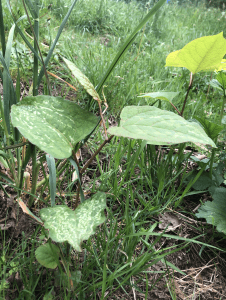 Part A: Invertebrate Variation
Part A: Invertebrate Variation
- What adaptations allow them to survive in their environment?
- Pill bugs (Armadillidium vulgare)
- Unlike other woodlouse families, pill bugs can roll onto a ball, an action which protects their softer underside with their hard shell. Pill bugs have antennae and when they sense danger or their environment has become hostile, they curl into a ball.
- List several structures and explain how the structure allows the organism to survive and thrive in its environment.
- Pill bugs have exoskeletons that is made of 7 or 8 shell plates that overlap down it’s back from its head to the uropod. This structure is what allows it to roll up into a ball.
- When they grow they shed their shell, but it doesn’t shed it all at once. They shed the back half of the plates first and wait a few days for new ones to grow in before shedding and replacing the front half of the plates.
Part B: Invasive Plant Species

- Knotweed (Polygonum cuspidatum)
- Where is the original (native) habitat of this species located?
- Knotweed is native to east Asia and first appeared in north America in the 1880’s.
- How was this species first introduced into foreign habitats?
-
- Knotweed was originally grown in Niagara, Ontario for ornamental purposes.
- Provide at least one reason for why this species has flourished in its new habitat.
- Knotweed has flourished here because it grows best in wet areas like ditches, riverbanks and marshland, of which we have plenty. Also, the plant produces seeds but it is rarely the seeds that germinate new plants. It reproduces more often from the dispersal of its stems and roots.
- Provide some detail as to how this species is causing ecological harm in its introduced habitat.
- Knotweed causes harm to the ecosystems it invades by forming thick bushes, draining the ground of nutrients and smothering other native plants.
- List two methods used to try to control this invasive species.
- To prevent the spread of knotweed, signs are placed by each shrub that warn mowers not to mow over it and spread it everywhere. Once the plants are located, they can be controlled with multiple applications of herbicide or by digging the plant up with its roots.









Leave a Reply